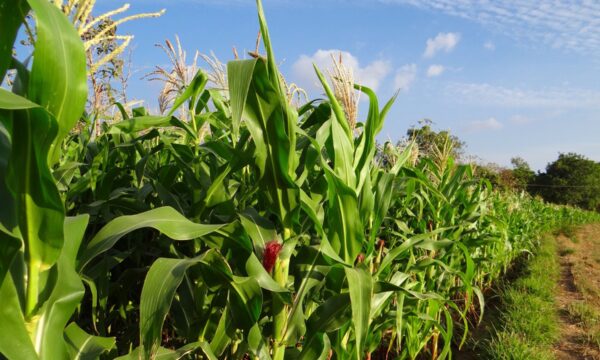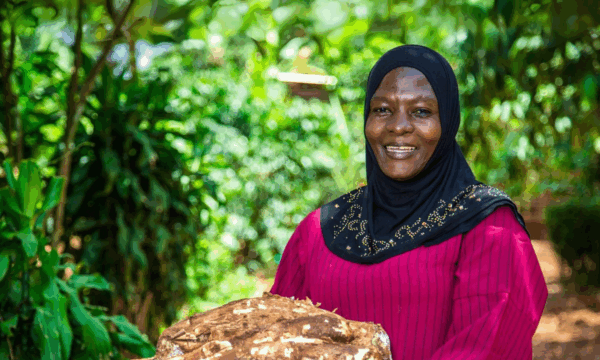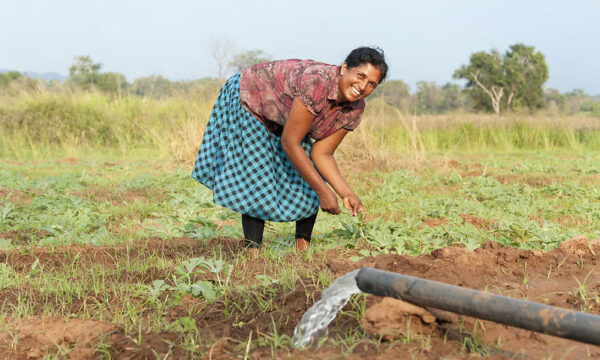
Tertiary vein chlorosis of Cassava brown streak disease, just one of the diseases CABI scientists worked on in 2012 © IITA (CC BY-NC licence)
In 2012, CABI scientists continued to contribute to the discovery of new occurrences of plant pests and diseases, via the Plantwise diagnostic service. CABI’s Plantwise initiative offers a free service for eligible clients in developing countries, providing disease identification support to plant clinics. Every year, the DFID-funded service receives more than 500 samples from 80 different countries. CABI and Food and Environment Research Agency (FERA) scientists then diagnose the problem and report any new occurrences of pathogens they find. The following published reports contain examples of new occurrences discovered in 2012.
First confirmed report of Gibberella indica on Cajanus cajan in Barbados, Lesser Antilles.
Pigeon pea (Cajanus cajan), grown for food and fodder, is an important grain legume in the semi-arid tropics and the Caribbean. In February 2009, severe disease symptoms were observed on pigeon pea plants at the Central Agronomic Research Station in Barbados. A chocolate brown to black stem discolouration was noticed and leaves began to wilt and show interveinal chlorosis. A sample of the infected plant was sent in for identification. A fungus was isolated from the samples, which was identified using morphological characteristics as Gibberella indica. This has now been confirmed using molecular methods.
The following diagnoses were carried out by FERA, with CABI involvement:
First report of Ugandan cassava brown streak virus on cassava in Democratic Republic of Congo
Cassava brown streak disease is caused by Ugandan cassava brown streak virus (UCBSV) and Cassava brown streak virus (CBSV). These viruses affect all parts of the cassava plant, including the edible tubers, and could affect food security in Central and East Africa. In September 2011, CBSV leaf symptoms were observed in a cassava field in the Lubero District of the Democratic Republic of Congo (DRC). Dried leaf samples were sent to FERA for verification. Using PCR, the causal agent was found to be UCBSV. The sample was negative for CBSV.
A damaging and apparently new disease of maize was first identified in Kenya in 2011. As part of the Next-generation sequencing (NGS) technique, RNA was purified from the affected material and sequenced using one of the latest sequencing systems. A GenBank search for the resulting sequence identified the presence of Maize chlorotic mottle virus and Sugarcane mosaic virus, the combination of which is known to cause maize lethal necrosis disease. PCR assays have now been developed, which should aid the assessment of this disease and could be used in routine diagnosis.
1 Comment
Leave a Reply
Related News & Blogs
How plant clinics are strengthening crop health services in Bangladesh
When the first-ever plant clinic in Bangladesh opened in Dhaka in 2013, it initially faced a lack of interest due to its novelty and limited awareness among farmers. However, it went on to expand, providing advice to over 17,000 farmers and led to the…
2 July 2025






watch out soon for a report analysing the CABI diagnostics laboratory activities over the period between 2003 and 2009.